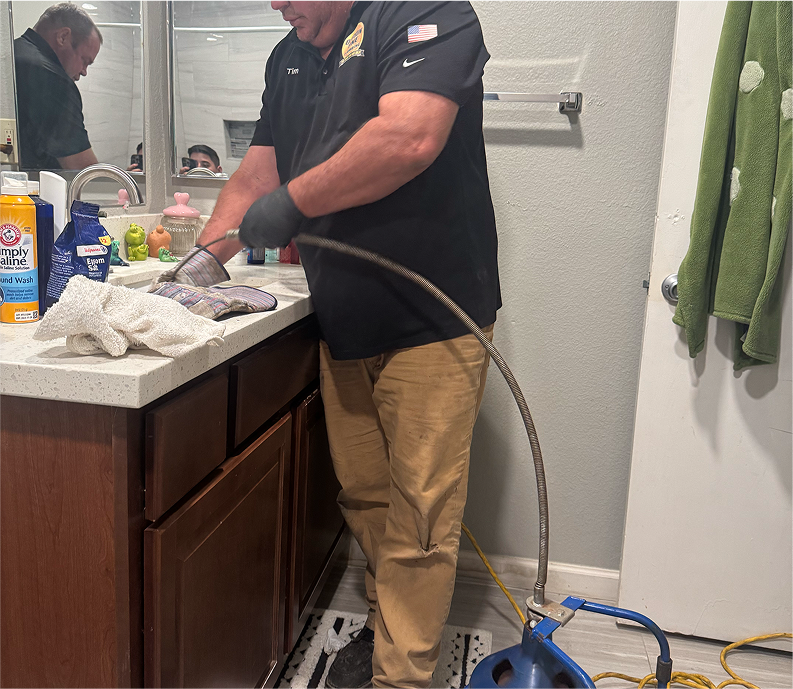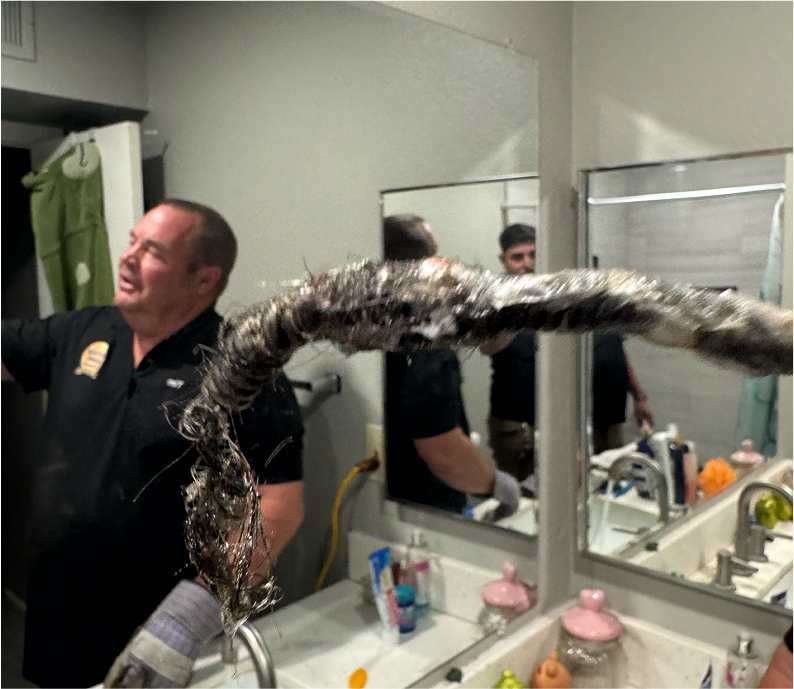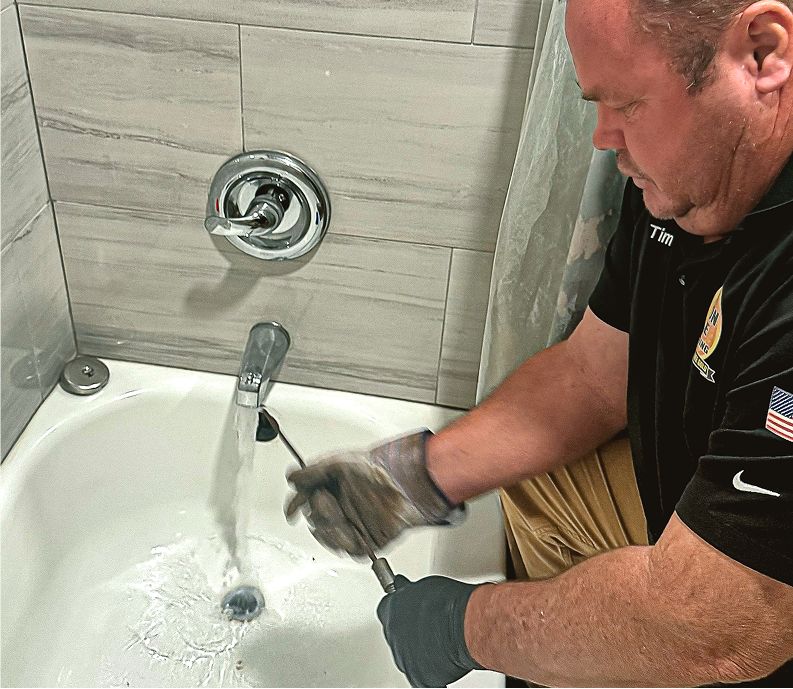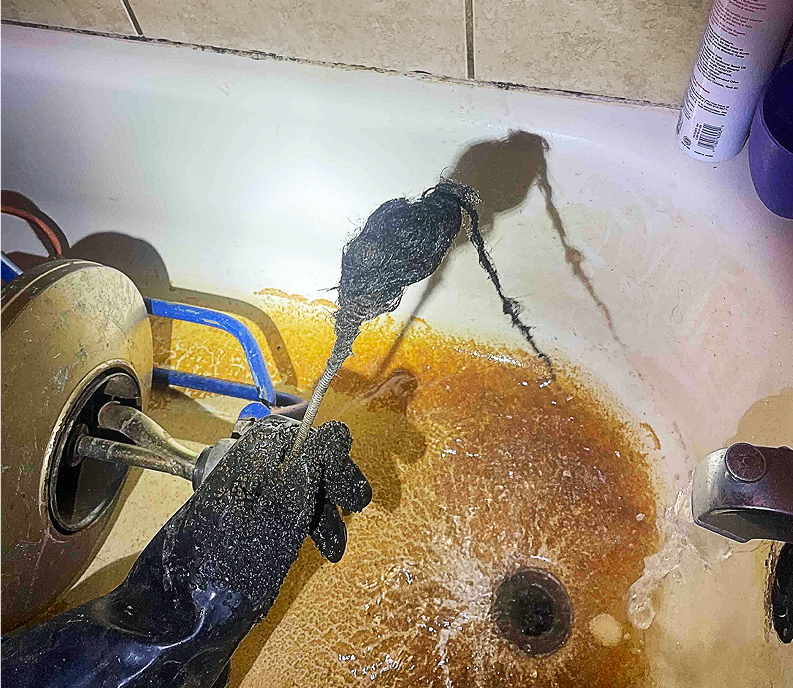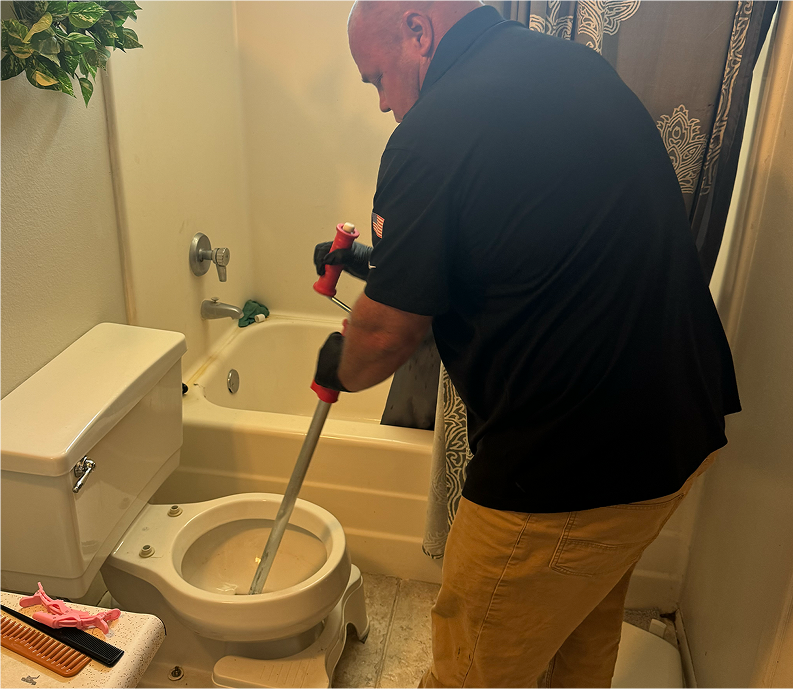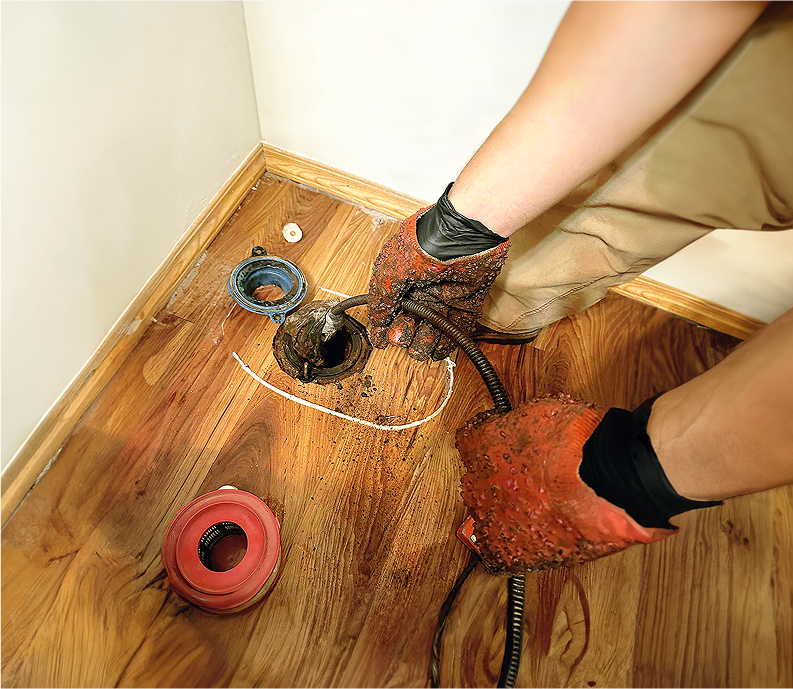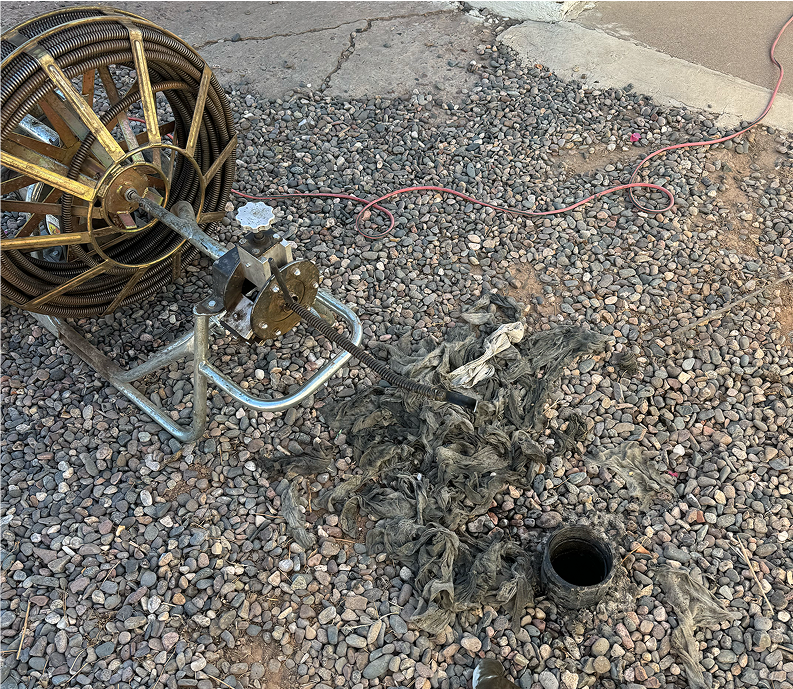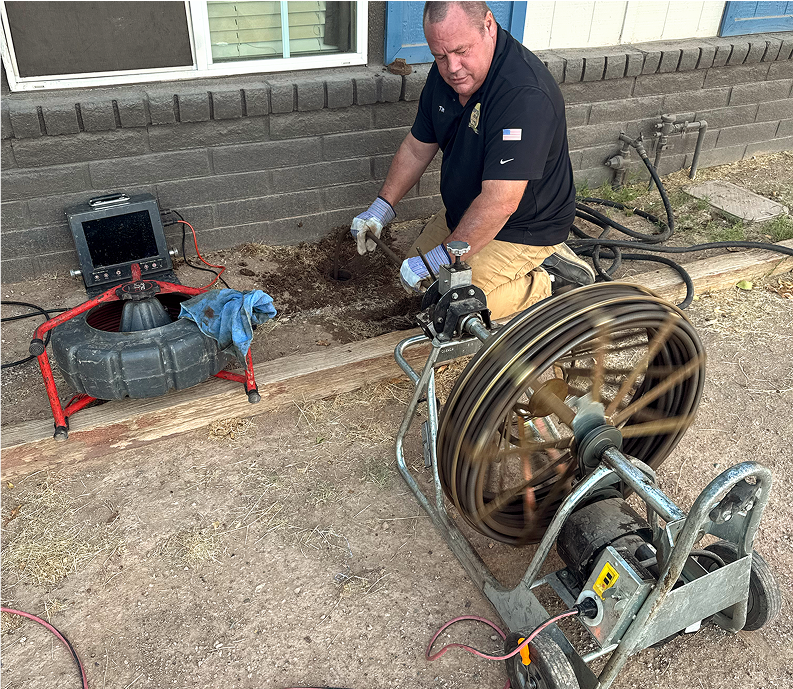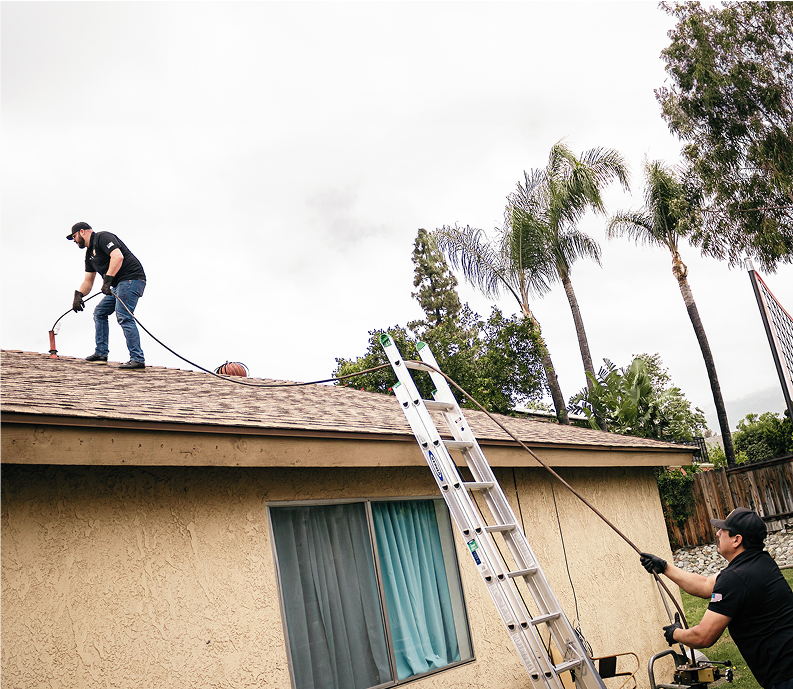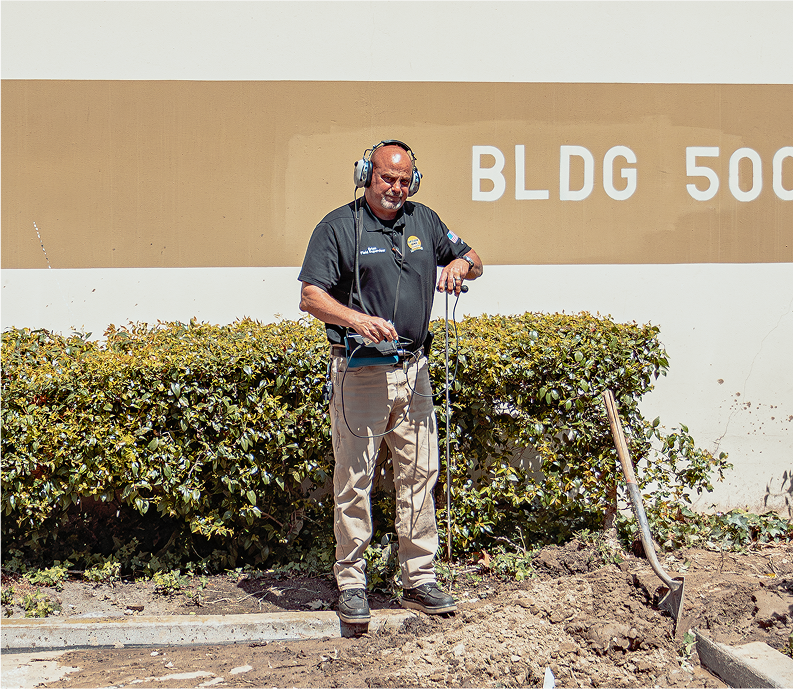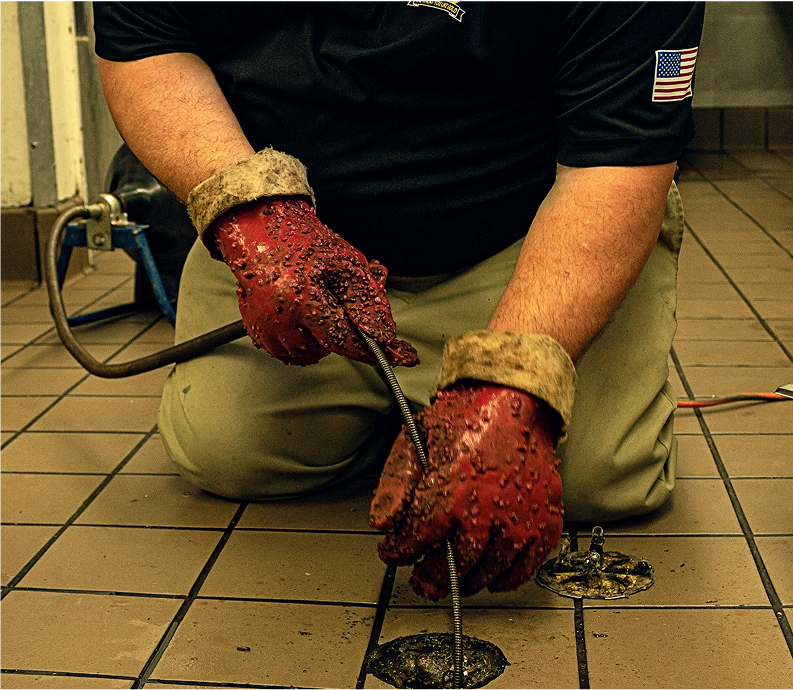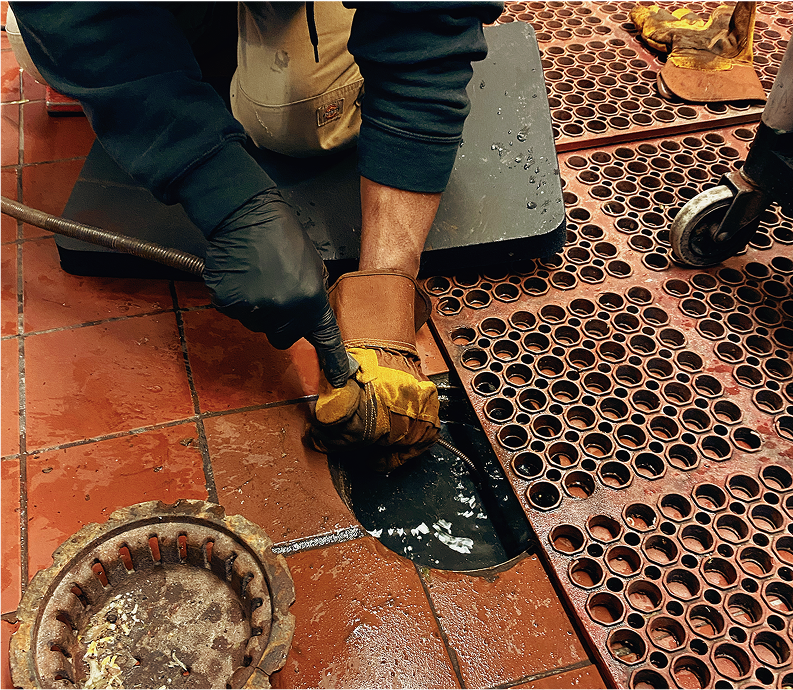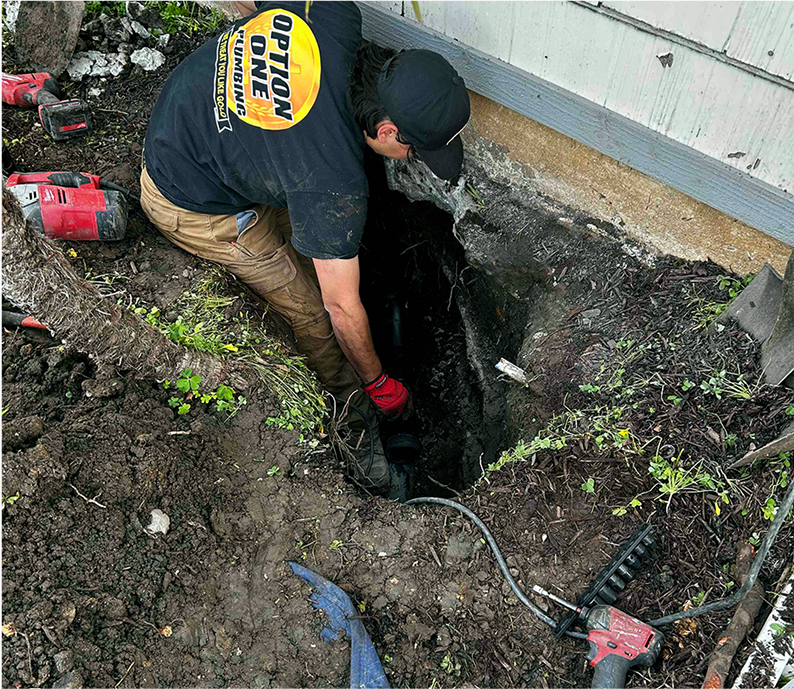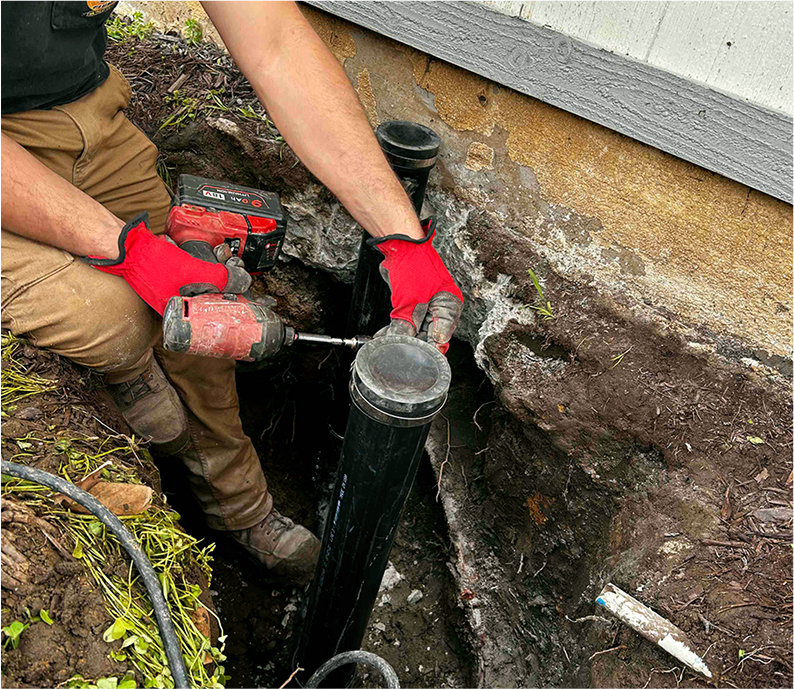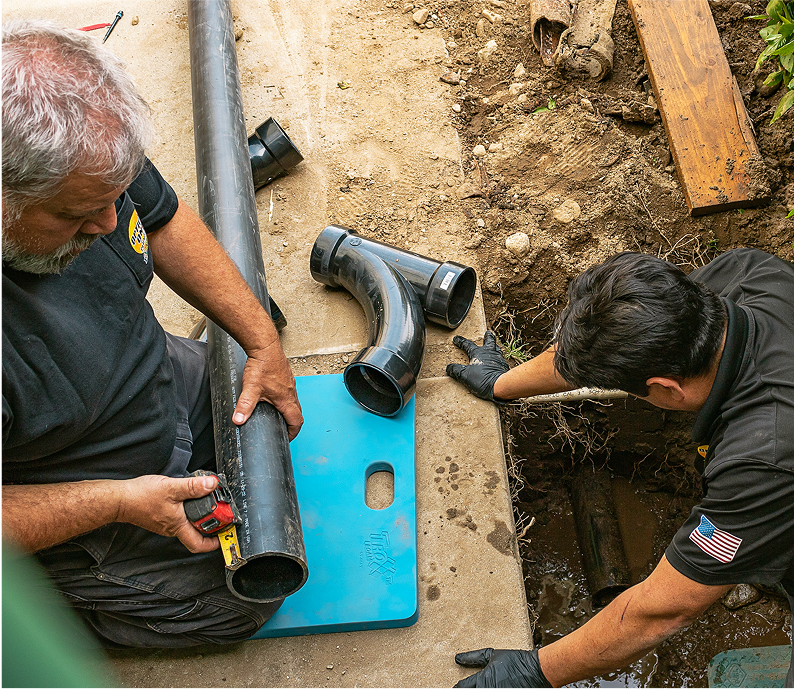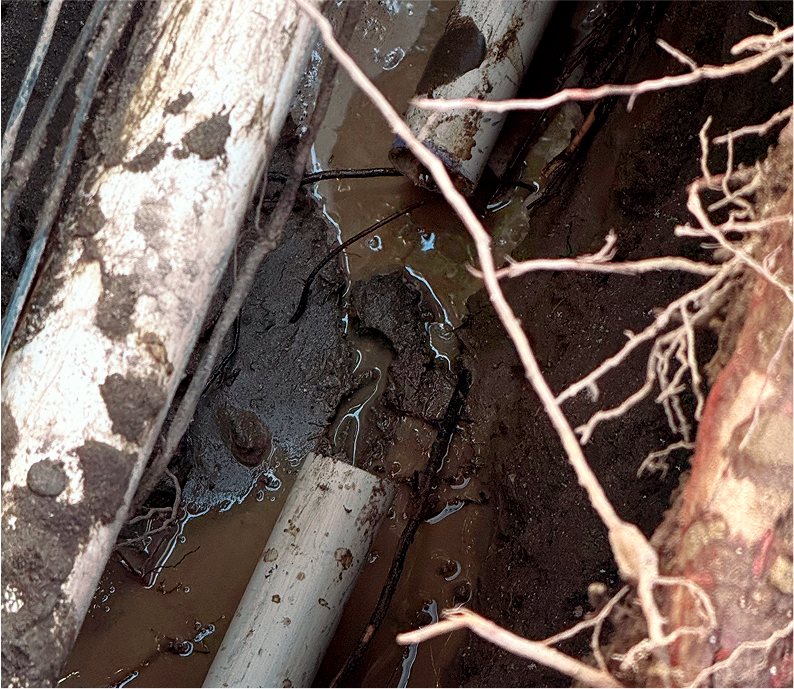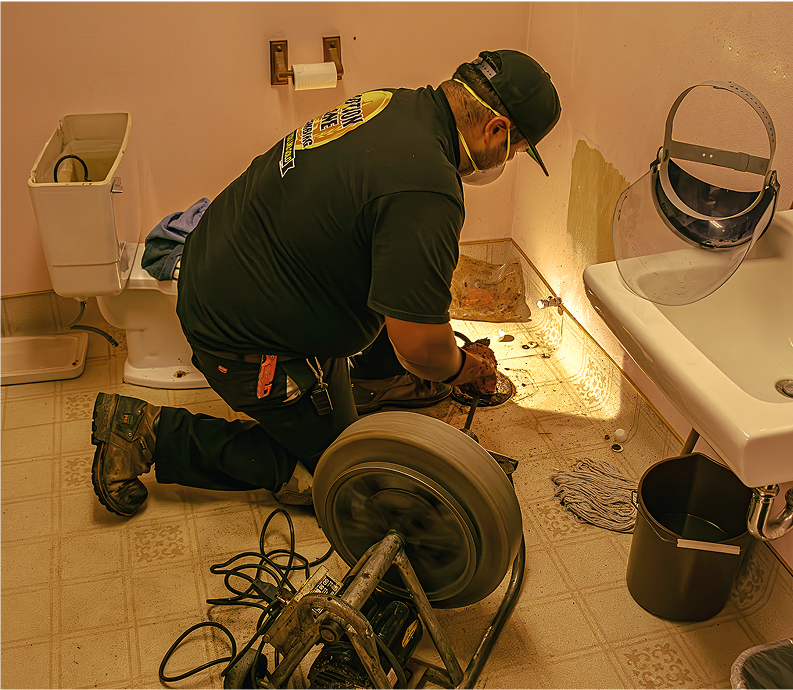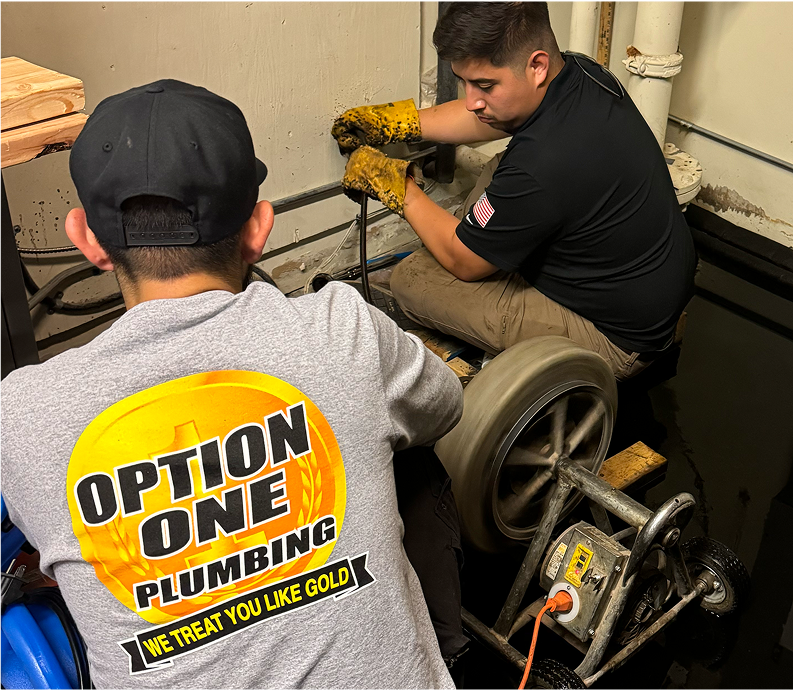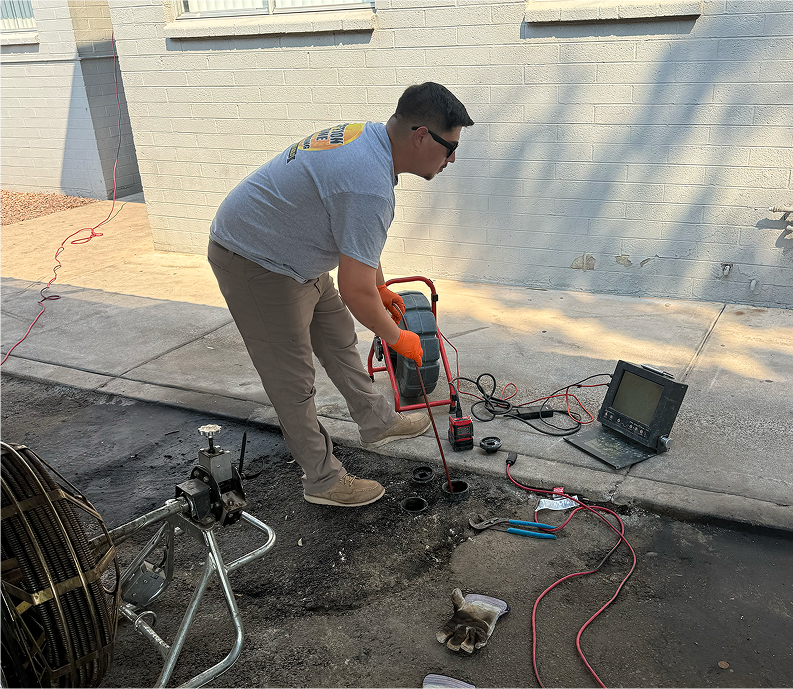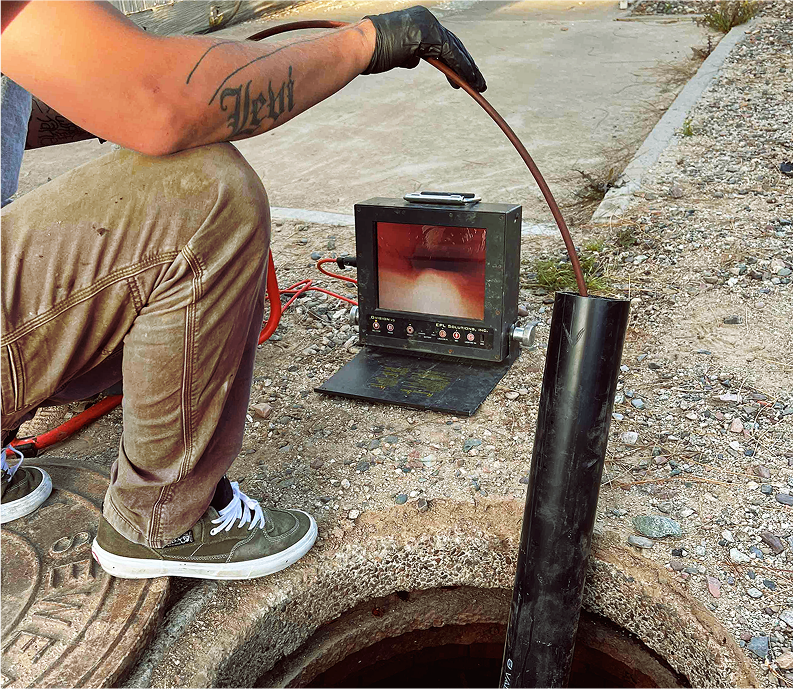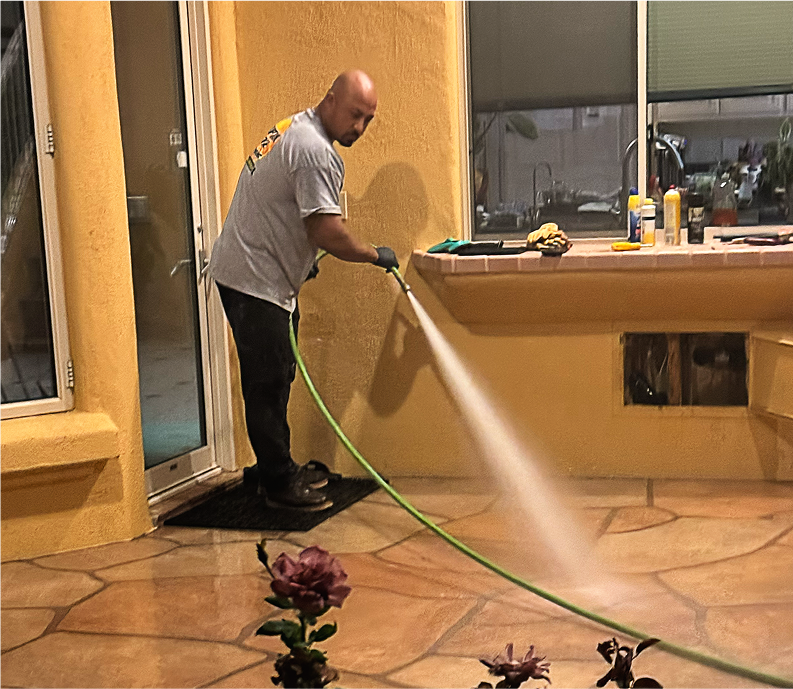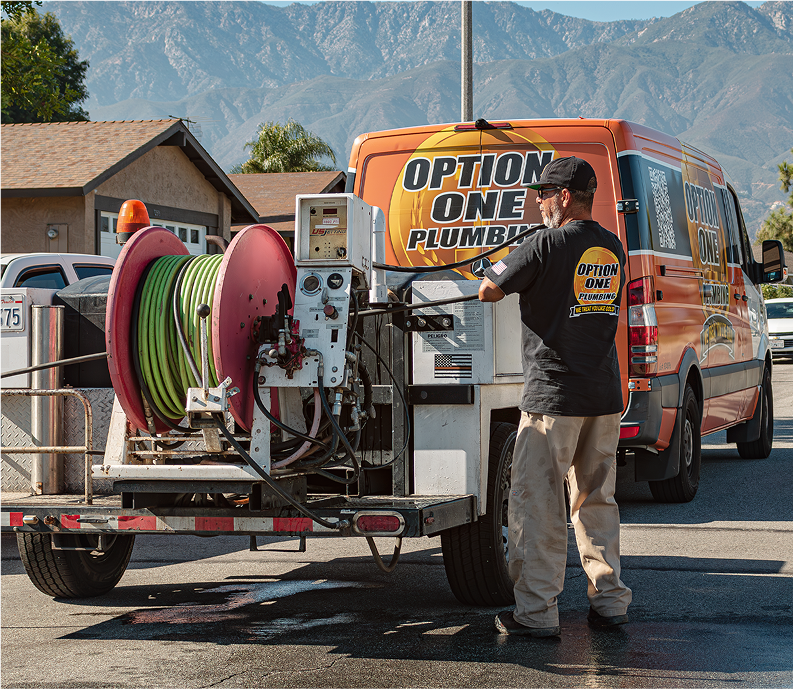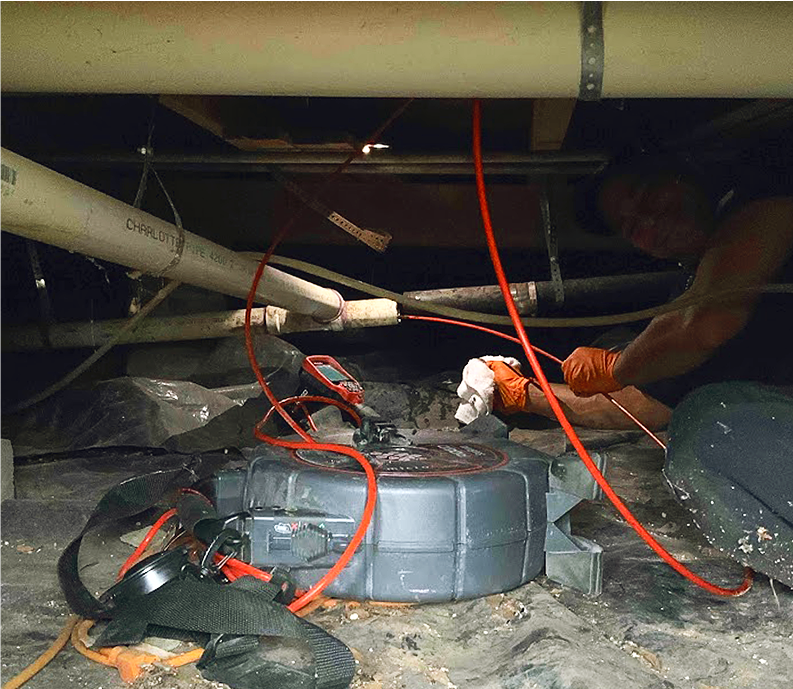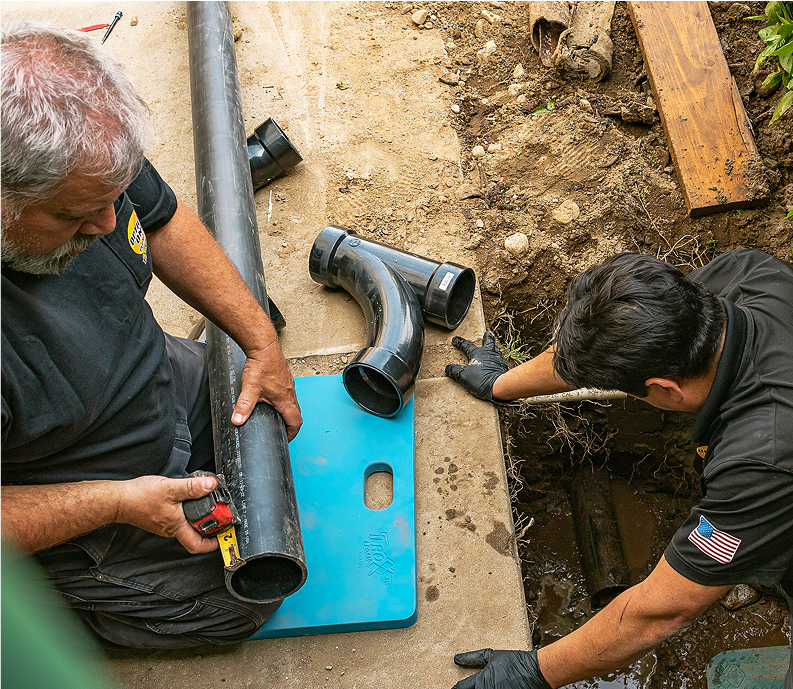Protect Your Home and Family with
Our Reliable Gas Leak Detection Service
Ensure your safety with our expert gas leak detection and repair services. Our certified technicians use advanced technology to quickly locate and repair gas leaks, preventing potential hazards. We provide prompt, reliable solutions to protect your home and family. Contact us for comprehensive gas leak services and peace of mind.
Gas Leak Detection and Repair
Gas leaks are a serious threat that can have devastating consequences if left unaddressed. From fires and asphyxiation to potential explosions, the dangers of gas leaks should never be underestimated. That's why the team at Option One Plumbing offers reliable gas leak detection services to keep your home and family secure.
Don't take chances with your safety. Contact Option One Plumbing today and let us inspect your gas system. We'll identify any issues and provide the solutions you need to feel secure in your home. Protect what matters most - choose our gas leak detection service.
Our licensed inspectors in California, Arizona, North Carolina, and South Carolina use advanced technology like gas detectors and infrared cameras to quickly locate the source of any leaks in your gas lines or appliances. We'll then provide the expert repairs needed to stop the flow of gas and eliminate the hazard. With our prompt, professional service, you can have peace of mind knowing your property is protected.
Natural gas is indeed odorless, which poses a challenge in detecting leaks that could be potentially hazardous. To mitigate this risk, gas companies introduce mercaptan, a chemical compound known for its strong odor resembling that of rotten eggs or sulfur. This distinctive smell serves as a practical safety measure, enabling individuals to easily notice when a leak occurs. Should the smell of mercaptan be detected in or around one's home, it is a clear indicator of a natural gas leak. In such situations, it's imperative to act swiftly, evacuating the area and contacting the gas company or emergency services to address the leak safely and prevent any dangerous accidents.
If you hear hissing or whistling sounds near gas appliances, pipes, or the gas meter, these noises can indicate a gas leak. Gas leaks pose serious risks, including the potential for fire or explosion and exposure to gas, which can be harmful to health. It's important to act quickly and safely. You should immediately turn off the gas supply if possible, ventilate the area by opening doors and windows, avoid using electrical switches, flames, or any activity that could generate a spark, and evacuate the premises. Contact your gas supplier or a professional gas leak detection company near you like Option One Plumbing to inspect and repair the leak as soon as possible.
When plants or vegetation near gas lines or appliances start dying or turning brown without an obvious cause, it could be a sign of a gas leak. These leaks can release harmful substances into the soil and air, depriving plants of essential nutrients or altering the soil in a way that damages plant health. Gas leaks pose safety risks and signal potential environmental damage, so they should be taken seriously. Call the professionals at Option One Plumbing to investigate immediately address and repair any gas leaks, protecting both human and plant life.
A sudden or unexplained spike in your monthly gas bills could indicate a gas leak in your home or on your property. Even if your household's energy usage remains consistent, a dramatic increase in gas costs is often an early sign of a problem with your gas lines or appliances. Gas leaks can develop gradually as pipes and fittings age and wear down, allowing small amounts of gas to escape. However, a severe leak can also occur suddenly, such as from a cracked or damaged line, immediately increasing your gas consumption and costs.
Tracking your monthly bills and being aware of unexpected jumps in gas expenditures is crucial, as these hikes are frequently an early red flag of an undetected leak. Catching a gas leak early is important, as they pose serious safety risks and can significantly drive up your energy expenses if left unchecked. If you notice your gas bills spiking with no logical explanation, have an Option One Pro inspect the issue and repair the gas leak promptly before the problem escalates.
When inspecting your home's gas lines, connections, and appliances like stoves, water heaters, and furnaces, it's crucial to carefully examine them for any signs of visible damage or potential issues. One of the key things to look for is rust or corrosion - these can be telltale signs that the metal components have begun to degrade over time, compromising their structural integrity and potentially leading to gas leaks. It's also important to inspect for any physical damage, such as cracks, dents, or other visible impairments, as these could also create vulnerabilities in the gas system that could allow gas to escape. This type of damage may be caused by accidental impacts, age-related wear and tear, or even rodent or pest activity. Additionally, you'll want to check the connections where gas lines meet appliances, ensuring they are tightly secured and showing no signs of looseness or deterioration that could create leak points.
Ultimately, a thorough visual inspection focused on detecting any rust, corrosion, or physical damage is a crucial first step in maintaining the safety and integrity of your home's gas infrastructure and preventing potentially dangerous leaks. Taking the time to carefully examine these components can help identify issues before they become serious problems.
Exposure to a gas leak can have serious and immediate consequences for both humans and pets. The escaped gases can quickly trigger a range of distressing physical symptoms when inhaled.
- Dizziness is often an early sign, as the gases disrupt the body's natural balance and equilibrium. This disorientation may be accompanied by nausea, as the toxins disrupt normal digestive and neurological functioning.
- Headaches are another common reaction, as the gases put pressure on the brain and central nervous system.
- Victims may also experience debilitating fatigue as their bodies struggle to process and expel the harmful substances.
- Perhaps the most dangerous symptom is breathing difficulties, as the gases can constrict airways and make it challenging to take in sufficient oxygen, potentially leading to respiratory distress and asphyxiation. These symptoms can manifest within minutes of exposure and continue to worsen the longer the individual remains in the contaminated area.
- Pets are especially vulnerable, with their smaller size exposing them to higher concentrations of the leaking gases.
Immediate evacuation and medical attention are critical to minimizing the damage from a gas leak and preventing potentially deadly outcomes.
The infrastructure that carries natural gas and other fuel sources through underground pipes is unfortunately susceptible to a variety of environmental factors that can cause gradual deterioration over time. As these gas pipes age, they become increasingly vulnerable to corrosion, rust, and general wear and tear, often developing small holes or cracks that allow the pressurized gas to slowly seep out. This is a particularly prevalent issue in many older urban areas with aging pipeline networks that may have been installed decades or even centuries ago.
Over the years, exposure to moisture, soil acidity, and other natural elements can eat away at the metal or plastic materials used to construct the pipes, weakening their structural integrity. Additionally, temperature fluctuations, ground shifts, and other geological changes can cause the pipes to expand, contract, and even crack in certain spots. Even the slightest imperfection or pinhole-sized opening is enough for the highly flammable gas to escape, posing serious safety risks. Identifying and repairing these problem areas is crucial, as uncontrolled gas leaks not only waste valuable resources but can also potentially lead to explosions, fires, and environmental damage if left unchecked
If gas lines or appliances are not installed correctly, it can have serious and dangerous consequences. One of the main risks is the possibility of loose joints and leaks, which can occur due to various installation errors. For example, if the threading on the gas line or appliance connections is not properly aligned or tightened, it can result in an insecure fit that allows gas to slowly escape. Similarly, inadequate sealing around the joints, whether due to a lack of pipe thread sealant or improper application, can create openings for gas to leak. Incorrect connection techniques, such as using the wrong fittings or not tightening components enough, can also lead to loose and leaky joints. These installation flaws essentially create pathways for natural gas or propane to leak from the system, which poses a significant safety risk.
Leaking gas not only increases the risk of fire and explosions but can also cause asphyxiation if it accumulates in enclosed spaces. Proper training and attention to detail are crucial when installing any gas-fueled equipment to ensure that all connections are secure and sealed, eliminating the possibility of dangerous leaks. It is essential to carefully follow manufacturer instructions and local building codes when installing gas lines and appliances to prevent the serious consequences that can arise from improper techniques.
The natural environment poses significant threats to the integrity of gas pipelines and infrastructure, potentially leading to dangerous leaks and ruptures. Extreme weather events, such as powerful earthquakes, devastating floods, and ferocious storms, can wreak havoc on the delicate network of underground gas lines, cracking and breaking the pressurized pipes and allowing gas to escape. Even more insidious are subtle environmental factors like gradual soil movement or relentless tree root growth, which can gradually wear down and displace gas lines over time, causing cracks and breaches that may go unnoticed until a catastrophic failure occurs.
Addressing these environmental vulnerabilities is critical for gas companies and regulators, who must employ robust monitoring, maintenance, and reinforcement strategies to safeguard these vital energy conduits from the caprices of nature. Careful engineering, advanced sensing technologies, and proactive risk mitigation are essential to protecting gas infrastructure against the ravages of natural disasters. With public safety and economic stability at stake, managing these environmental threats is of paramount importance in the gas industry.
The underground network of gas lines that delivers fuel to homes and businesses is often vulnerable to damage from nearby tree roots. As trees grow, their expanding roots can invade and disrupt the connections and infrastructure of these critical gas pipelines. Over time, the powerful, searching roots can work their way into the seams and joints of gas lines, causing cracks and leaks that allow dangerous natural gas to seep out. This creates a serious safety hazard, potentially leading to explosions or fires if the leaking gas ignites. Additionally, tree roots can shift and displace the ground around gas lines, causing them to become misaligned or cracked.
The constant use and exposure to the elements can gradually degrade the integrity of gas lines and fittings over time. As these components age, the materials they are made of - whether metal, plastic, or a combination - begin to break down, becoming more brittle and susceptible to cracks, corrosion, and other forms of damage. This natural wear and tear weakens their structure and compromises their ability to function as intended. Without proper maintenance and timely repairs, these small imperfections can worsen, eventually causing the gas lines and fittings to fail completely, resulting in dangerous leaks that pose serious safety hazards. Homeowners and facility managers must remain vigilant, regularly inspecting their gas infrastructure for any signs of deterioration and addressing issues promptly before they escalate into catastrophic problems. Proactive, preventative care is crucial to ensuring the continued safe and reliable operation of gas lines and fittings over their lifespan. Failing to do so leaves people and property vulnerable to the devastating effects of uncontrolled gas leaks, which can lead to fires, explosions, and other calamitous outcomes.
Maintaining proper gas pressure is crucial for the safe and efficient operation of gas-powered appliances and systems. When the pressure is incorrect - too high or too low - it can lead to various issues. Excessively high pressure places undue stress on pipes, fittings, and components, potentially causing cracks, bursts, or compromises. This creates a serious safety hazard, as the high-pressure gas can then escape and leak, posing a fire and explosion risk. Conversely, if the pressure drops too low, appliances may malfunction, failing to ignite properly or operate efficiently. This can result in incomplete combustion, wasted fuel, and even system shutdowns. Either extreme disrupts the delicate balance required for gas-powered equipment to function correctly and safely.
Monitoring pressure levels and making prompt adjustments is essential to avoid dangerous gas leaks and appliance failures. Maintaining proper gas pressure is a key responsibility for anyone working with gas-fueled systems.
Over time, gas line connections to appliances can become loose or damaged, especially if they are frequently moved or adjusted. This is a common issue that homeowners and technicians need to be aware of, as compromised gas line connections pose a serious safety risk. Natural gas and propane are highly flammable, so any leaks or breaks in the lines can lead to disastrous consequences like fires, explosions, or carbon monoxide poisoning.
Routine professional inspections and prompt repairs are essential to keep these vital connections secure and gas-tight. Homeowners should also check for signs of damage or leaks, like the distinct rotten egg smell of natural gas, and immediately shut off the supply and call for service if any issues are detected. Maintaining the safety and integrity of gas line connections requires diligence, but it's a small price to pay to protect against the catastrophic risks of an uncontrolled gas leak.
When a gas leak is detected, it is crucial to act quickly and follow proper safety protocols to evacuate the area. Gas leaks pose a serious threat, as the escaped gas can be highly flammable and potentially explosive if ignited. At the first sign of a gas leak, such as the distinctive rotten egg smell or the sound of hissing coming from a gas line, it is essential to immediately evacuate the premises in a calm and orderly manner. Everyone should exit the building as swiftly as possible, leaving doors and windows open behind them to allow the gas to dissipate.
Once safely outside, a safe distance away from the structure, residents should contact the gas company or emergency services right away to report the leak and request immediate assistance. Gas company technicians will then arrive on the scene to locate the source of the leak, shut off the gas supply, and make any necessary repairs before it is deemed safe for anyone to re-enter the building.
In the event of a gas leak, it is absolutely critical that residents avoid turning on any electrical devices or lighting matches, as even the smallest spark could have catastrophic consequences. Natural gas is an extremely flammable substance that can easily be ignited by minor ignition sources. When gas leaks into the air, it mixes with oxygen to create a highly volatile and explosive combination. Just a tiny spark from something as simple as a light switch or a lit cigarette could instantly set off a massive explosion, ripping through the surrounding area with tremendous force.
The sheer power of such a blast would be devastating, potentially leveling an entire building and causing severe injuries or loss of life to anyone nearby. That is why it is crucial that people immediately evacuate the area and avoid anything that could serve as an ignition source until the gas leak is contained and the area is declared safe by emergency responders. The risk of a catastrophic explosion is too great to ignore, and taking even minor precautions could mean the difference between life and death in such a perilous situation.
When a gas leak occurs, it is critical to quickly and thoroughly ventilate the affected area. Gas leaks from any source can rapidly fill a space with dangerous, flammable vapors that pose serious risks of explosion and asphyxiation. Proper ventilation is essential for dispersing these hazardous gases, reducing the chance of disaster and allowing safe access to the leak source.
This is typically done by opening all windows and doors to create a strong cross-draft, pulling the gas-laden air out and replacing it with fresh, breathable air from outside. Fans can further increase air circulation and speed up the process. It's vital to avoid any potential ignition sources until the area is deemed fully safe by professionals. Swiftly ventilating the space is a lifesaving measure, as it rapidly removes the explosive and asphyxiation hazards. Proper ventilation is a simple but crucial first step in safely addressing and resolving a dangerous gas leak.v
When you suspect a gas leak in your home or business, it's crucial to call in the experts right away. That's where Contact Option One Plumbing comes in - as your local gas leak emergency service, they have the training, tools, and experience to handle any gas-related inspection, detection, or repair needs.
At the first sign of a potential leak, whether it's the distinct rotten egg smell or the sound of hissing gas, don't hesitate to reach out to the team at Contact Option One. They'll promptly dispatch a highly skilled technician armed with advanced leak detection equipment to pinpoint the source of the problem. From there, they'll take the necessary steps to shut off the gas supply and make any required repairs, ensuring your home or business is secure and the gas flow is restored safely.
Contact Option One Plumbing is committed to rapid response times and meticulous, code-compliant workmanship. They understand the gravity of gas leak situations and treat every call with the urgency it deserves, completing all work to the highest standards and leaving you with complete peace of mind. So if you're dealing with a gas leak emergency, don't take any chances - contact the experts at Contact Option One Plumbing right away.
When it comes to detecting and diagnosing a gas leak, professionals have a well-established process they follow to locate the source. The first step is to utilize specialized detection equipment to pinpoint the leak's origin.
Gas detectors are commonly employed, which can sense the presence of natural gas or other flammable vapors in the air and alert the technician to the general area of the problem.
Infrared cameras provide an even more precise method, as they can visually identify temperature differences that indicate escaping gas.
Ultrasonic detectors are another tool in the arsenal, using sound waves to pick up the distinct hissing noise of leaking gas. These advanced instruments allow the professionals to quickly zero in on the leak's location.
Once the general area has been identified, the next phase is a thorough visual inspection. The technician will carefully examine all gas lines, fittings, valves, and connections, looking for any obvious signs of damage, corrosion, or wear that could be the source of the leak. Things like cracked or corroded pipes, loose joints, or malfunctioning components will all be noted and assessed. This hands-on, detailed inspection is critical to getting an accurate understanding of the issue at hand.
In the event of a gas leak or other issue, it is critical to quickly locate and shut off the main gas supply valve. This valve, typically near the gas meter or where the gas line enters the property, is the key control point for the entire gas system. By turning the valve to the "off" position, the gas flow is immediately cut off, halting the escape of gas and eliminating the risk of fire, explosion, or asphyxiation.
This swift action is a vital safety precaution, as uncontrolled gas leaks can quickly fill a structure with flammable, potentially deadly fumes. Once the main valve is shut, affected appliances or sections of the gas system can then be isolated and repaired without ongoing gas release. Shutting off the main supply is the first and most important step in addressing a gas emergency, as it removes the source and allows repair crews to safely access and fix the issue. This simple but essential valve provides the shut-off function that can make the difference between a minor incident and a major disaster when dealing with a dangerous gas leak.
When dealing with plumbing issues, a crucial step is tightening any loose connections and fittings to prevent minor leaks. Small gaps and openings in the piping system can allow water to slowly seep out, leading to water damage, mold growth, and higher utility bills over time. By carefully inspecting each joint and fitting and using the appropriate tools to gently but firmly tighten them, plumbers can seal up these potential problem areas and restore the integrity of the plumbing network. This meticulous attention to detail helps ensure a fully leak-free system.
Similarly, if any of the joints, elbows, or other fittings in the plumbing network have become worn, cracked, or otherwise damaged, those individual components will need to be replaced entirely. Plumbers will carefully disconnect the faulty fitting, measure and obtain the correctly-sized replacement part, and then expertly install it, using the necessary sealants and securing methods to create a tight, reliable seal. This targeted repair work helps maintain the overall health and performance of the entire plumbing system.
In addition to tightening connections, plumbers may also utilize specialized sealants or epoxy compounds to address any small cracks or holes that have developed in the pipes themselves. These advanced bonding agents are carefully applied to the affected areas, creating a durable, waterproof seal that prevents further leakage. This is an effective solution for minor pipe damage, as it allows the existing pipes to be preserved rather than requiring full replacement.
However, in cases of more severe pipe deterioration or corrosion, the only solution may be to entirely replace the damaged sections. This process involves carefully cutting out the compromised portions of pipe and then fitting and securing brand new replacement piping in its place. The proper connectors, fittings, and sealants must then be used to ensure a secure, leak-free join between the old and new pipe segments. This level of intricate, precision work requires the expertise of skilled plumbers to execute flawlessly and restore full functionality to the plumbing system.
After completing a gas line repair, technicians take meticulous steps to thoroughly inspect the work and ensure the system's integrity. First, they use specialized gas detection equipment to scan the repaired sections for any leaks. These handheld devices are designed to precisely identify even trace amounts of natural gas or other flammable vapors escaping from the pipeline. The technicians methodically move the sensors along the length of the repair, carefully monitoring the readouts for spikes or anomalies that could indicate a persistent leak.
In addition to electronic gas detection, the technicians also perform a traditional soap bubble test. This involves coating the repaired joints and connections with a soapy solution, which will produce telltale bubbles if any pressurized gas is seeping out. The technicians closely examine every inch, watching vigilantly for even the smallest bubble formations that would reveal an incomplete seal or faulty repair. This dual approach of electronic and manual inspection provides comprehensive verification that the gas line is fully sealed and secure after the maintenance work.
Once satisfied that no leaks are present, the technicians repressurize the gas line to its normal operating levels. This pressure test confirms the structural integrity of the repaired sections, ensuring there are no weaknesses or breaches that could result in a future failure or gas release. The technicians monitor the pressure gauges closely, looking for any unexpected drops or fluctuations that would signal a problem with the repair. Only once the pressure remains stable for an extended period do the technicians deem the gas line fully restored and ready to be returned to service, with the confidence that the system is operating safely and without risk of leakage
After a gas leak has been repaired, experienced technicians conduct a thorough final inspection to ensure all work meets rigorous safety standards and regulatory requirements. They meticulously examine every aspect of the repair, leaving no stone unturned. The technicians carefully check that the pipework has been properly reinstated, all connections are secure and free of leaks, and the overall system is functioning as it should. This critical inspection process verifies the repair work is fully compliant with all relevant local building codes and safety regulations - a non-negotiable step, as gas systems must adhere to strict guidelines to protect property and occupants. Only once the inspectors are completely satisfied that every repair has been carried out precisely and the system is 100% safe, will they provide official sign-off. This multi-layered verification gives homeowners and businesses the peace of mind that their gas infrastructure has been meticulously restored to the highest standards of safety and compliance.
Expertise and Experience
- Accurate Detection: Professionals use specialized equipment to precisely detect and locate gas leaks, ensuring that all potential issues are identified and addressed.
- Effective Repair: Trained technicians understand the complexities of gas systems and can perform durable, long-lasting repairs.
- Preventing Further Damage: Experienced professionals can prevent additional harm to the gas system that may result from improper handling or amateur repairs.
Safety Considerations
Regulation Compliance
Quality Assurance
The cost of gas leak detection varies based on factors such as the size of the property, complexity of the leak, detection methods used, and regional labor rates. Basic detection methods can cost between $75 and $150, while more advanced and comprehensive inspections can range from $200 to $1,000 or more.
Larger properties or commercial buildings often require more extensive inspection, increasing overall costs. The more square footage that needs to be covered, the higher the cost due to the additional time and resources required
Simple, easily detectable leaks are cheaper to identify than more complex leaks that may be hidden behind walls or underground. If there are multiple potential leak sources, it may take more time and effort to accurately detect all issues.
Basic inspection methods like visual checks and soap bubble tests are generally less expensive than using advanced technology like electronic gas detectors, infrared cameras, or ultrasonic equipment, which can increase costs.
Costs can vary significantly by region, with urban areas typically having higher rates than rural areas. Rates may also depend on the service provider's level of expertise and reputation.
Emergency or after-hours services typically incur higher charges compared to scheduled, routine inspections.
- Basic leak detection (visual, simple tests): $75 - $150
- Advanced detection (electronic, specialized equipment): $200 - $500
- Comprehensive property inspection: $300 - $1,000+
Additional Costs:
- Initial diagnostic fees: $50 - $100 (may be waived for repair services)
- Travel fees for properties outside the service area
How Can I Tell If I Have A Gas Leak?
There are a few things that can help you identify if you have a gas leak. Although a strong smell of sulfur or rotten eggs is what people associate when suspecting a gas leak, not every gas leak has a strong odor. A hissing or whistling sound heard near a gas line can be a sign of a gas leak. You can also identify a gas leak if there is white cloud or dust cloud around a gas line.
A high gas bill can be a sign of a potential gas leak in your home. Pay close attention to sudden unaccounted spikes in your gas bill. Even the smallest gas leak can attribute to a noticeable difference on your gas bill.
What Should I do If I Suspect A Gas Leak?
How Often Should Gas Lines Be Inspected?
What Types Of Leak Detectors Are There?
Can I Rely On My Sense of Smell Alone To Detect Gas Leak?

Satisfaction Guarantee
If you are not 100% satisfied with your experience or service, we will make it right.

Safety Guarantee
The safety of our team members and our clients is valued above all. We are committed to keeping your family and home safe.
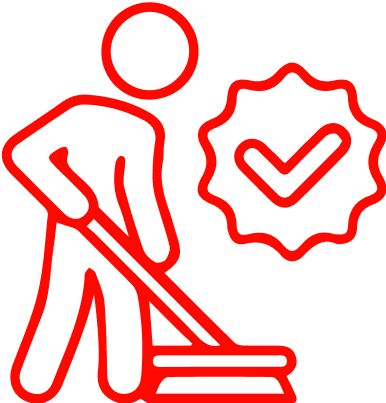
Cleanliness Guarantee
We guarantee our work area will be clean or we'll hire a professional cleaning company to do it for us.


